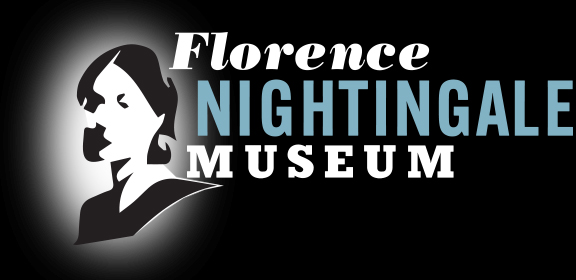Search our full collection
Search for an object here
Or explore by object tags
Highlights of the Collection

Athena the Owl
This owl was rescued by Florence Nightingale while she was on holiday in Greece from a group of children who were bullying the poor owl. Florence then decided to keep the owl as a pet, naming it Athena. Athena came home with Florence and spent a very comfortable few years as her pet. After the owl died, Florence’s family got it stuffed!
Athena is a Little Owl (Athene Noctua). The Little Owl is closely associated with the Greek Goddess Athena and the Roman Goddess Minerva and are seen to represent wisdom and knowledge.
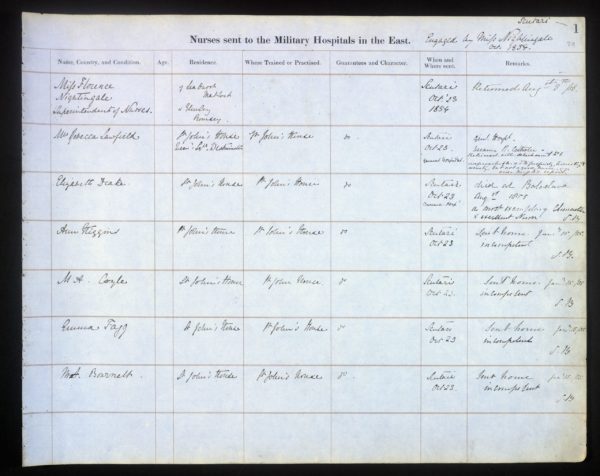
The Register of Nurses Sent to the Military Hospitals in the East
The Register of Nurses is a list of all the women who worked under Florence Nightingale at the British Military Hospitals during the Crimean War.
Heading the list is Nightingale herself, followed by the initial 38 nurses that went out with her. In total there are over 200 names on the list. The book lists their names, age, where they have been working, a reference and most interestingly, the last column contains a comment about the nurse. Some of the women have lovely comments, saying they were very good nurses. Unfortunately, others were less satisfactory. Nightingale was very clear on how she felt her nurses should behave, so any transgressions meant they were sent home.
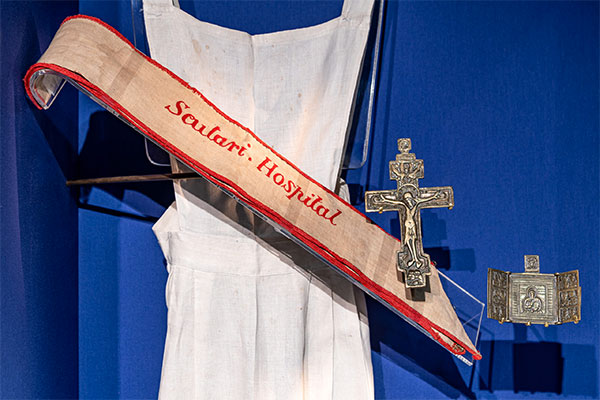
Scutari Hospital Sash
This sash was worn by one of the nurses that worked at Scutari Hosptial, alongside Nightingale.
Nightingale insisted that her nurses wore a uniform so that they were easily identifiable and to give them some protection while they were outside of the hospital. They would have worn a black or grey dress with a cap and an apron. This uniform was purposefully made to look similar to the nuns habits worn by some of the nurses that were at Scutari Hospital.
This sash would have been hand embroidered in red along the edges and across the centre of the sash, spelling out ‘Scutari Hospital’.
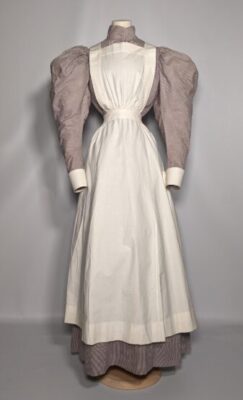
Nightingale Training School Uniform, 1890s
This uniform dates from the 1890s and was worn by probationer, Helena Riddick. The dress is made of mauve and white striped cotton and the mutton leg sleeves reflect the fashions of the decade.
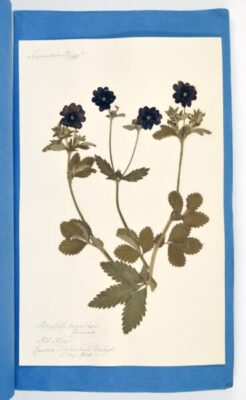
Herbarium
Florence Nightingale was gifted this herbarium by Margaret Stovin. All of the flowers and plants in the herbarium were collected from the area around Lea Hurst, one of Nightingale’s childhood homes.
Margaret Stovin was a botanist and became the first woman to be elected to the Botanical Society in 1840.
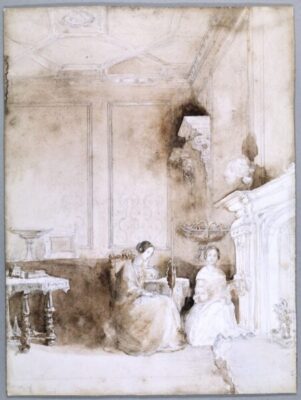
Pencil and Wash Drawing of Florence Nightingale and Marianne Nicholson
This drawing shows Florence Nightingale and her cousin Marianne Nicholson in the drawing of Embley Park, one of the Nightingale family homes.
This was drawn in around 1830, by Florence’s sister, Parthenope, who was a very accomplished artist.
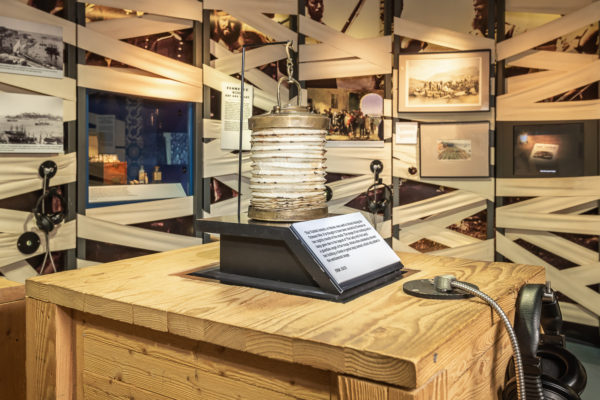
Fanoos Lantern
A key part of Florence Nightingale’s legacy is the nickname she had, ‘Lady with the Lamp’. The traditional Turkish candle lamp listed here, known as a fanoos, is one of many which Nightingale used in the Scutari military hospital where she was stationed during the Crimean war.
Nightingale is often depicted with a genie lamp or other well know styles of lamp for the time. This was in part due to the illustrators of the newspaper having never seen Nightingale at work and they often didn’t even know what she looked like.
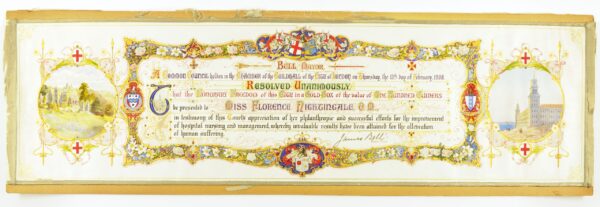
Freedom of the City Certificate
Nightingale was awarded Honorary Freedom of the City of London in 1908, becoming the second woman to receive Honorary Freedom. Honorary Freedom is generally given to recipients considered as distinguished or worthy. This certificate is parchment, which is made from the skin of oxen, sheep or goats. The certificates normally have a wooden box in which they are stored.
Nightingale was awarded the Freedom at a ceremony at the Guildhall in the City of London. It was received on her behalf by her cousin Louis Shore Nightingale.
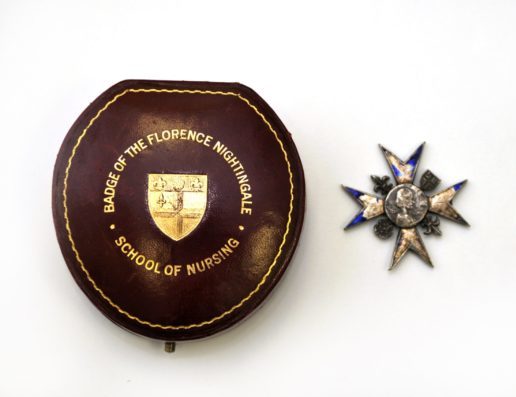
Nightingale Training School Badge
From the 1920s, all nurses that had trained at the Nightingale Training School received this badge.
This particular badge belonged to Eleanor Ferry who was working at St Thomas’s Hospital in September 1940, during WW2, when the hospital took a direct hit from a bomb.
Eleanor had her uniform blasted off and was lucky to survive. She was later able to find her intact but heavily damaged badge in the wreckage of the hospital.
